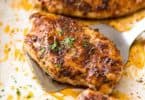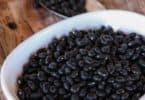While stuffing is usually seen as Thanksgiving dish, accompanying a traditionally prepared turkey, there are actually many different variations of stuffing dishes. Stuffing is the perfect partner for poultry, as well as other types of meats, such as pork. In addition, you can stuff vegetables, such as peppers and winter squash. Cooking stuffing takes several common approaches, all of which are quite simple.
Turkey Stuffing
Any mention of stuffing immediately brings to mind a full spread that is the Thanksgiving feast. Stuffing poultry is simple and delicious. For the best turkey stuffing, follow the following steps:
1. Rinse the fully thawed turkey, paying close attention to the stuffing cavity. Dry with a kitchen towel.
2. Prepare stuffing mixture according to the package directions. You can also soak dry bread cubes in seasoned broth.
3. Add any additions, such as sauteed onion, celery or oyster.
4. Scoop stuffing into the turkey cavity. Stuff loosely, without packing the stuffing mixture into the bird. Air flow is necessary for adequate heating while the turkey is roasting.
5. Roast stuffed turkey with the breast side facing up. The inside of the turkey breast should register at least 180 degrees on a meat thermometer. You may also want to test the stuffing temperature as well.
6. Remove the stuffing for serving.
You can find more tips on roasting a turkey, including specific ideas and advice about stuffing, at www.butterball.com.
Oven-Baked Stuffing
Some people prefer the taste and texture of oven-baked stuffing. It is easier to ensure that the stuffing is heated to a safe temperature when you oven-bake your stuffing. The following technique will ensure moist oven-baked stuffing.
1. Prepare the stuffing according to the instructions on the package. You can also create your own stuffing mixture with bread cubes and seasonings. Homemade stuffing can be moistened with broth.
2. Place prepared stuffing in a baking dish. Stuffing should be moderately moist, but not soggy.
3. Cover baking dish with tin foil to hold in moisture.
5. Bake at 350 degrees for about 45 minutes.
6. If you prefer a crispy crust on your baked stuffing, remove the tin foil for the final 10 minutes of baking time.
Stuffed Squash
Squash is a very versatile vegetable that melds well with numerous flavors. When dealing with stuffed squash recipes, you will probably see several common variations. Squash can be stuffed with a standard bread stuffing, as well as a stuffing that features rice as the base grain. In either case, sausage is usually included in squash stuffing.
In order to make stuffed squash, the stuffing mixture should be prepared in advance. If using a bread stuffing, a boxed mixed is sufficient, enhanced with things like onions and sausage; maple flavored sausage is a particularly good match. You can also cook rice in broth, much like a simple pilaf and add the traditional extras to this mixture.
Acorn squash is one of the most widely stuffed varieties of winter squash. It has a nice cavity and is small enough that it should cook fairly quickly. You can also stuff butternut squash and other types of winter squash. Cut the squash in half and remove the seeds from the cavity. Fill this area with your stuffing mixture.
Bake the stuffed squash, with the stuffing cavity facing up, at 350 degrees for about an hour. The squash flesh should be tender.
There are plenty of other types of foods that match well with various types of stuffing. Pork and chicken breast, for example, can be stuffed by cutting a slit in the meat. You can also stuff zucchini, as well as seafood such as lobster tails. Of course, most people will still prefer a traditional turkey stuffing.
<>







